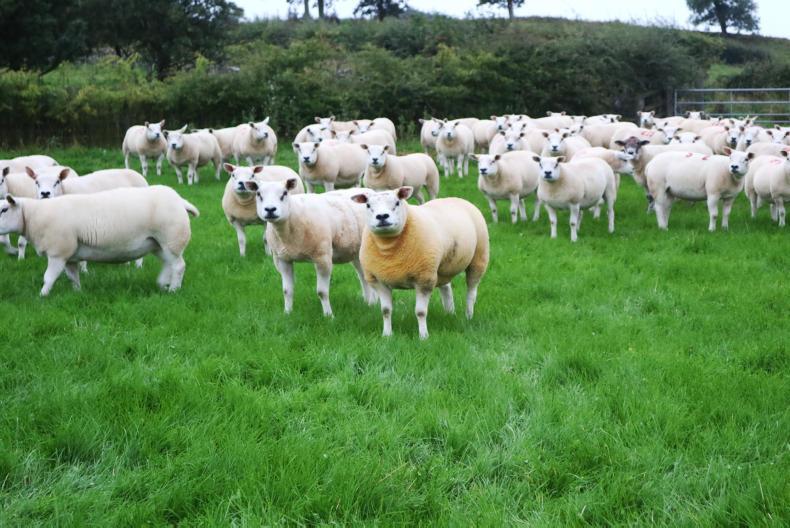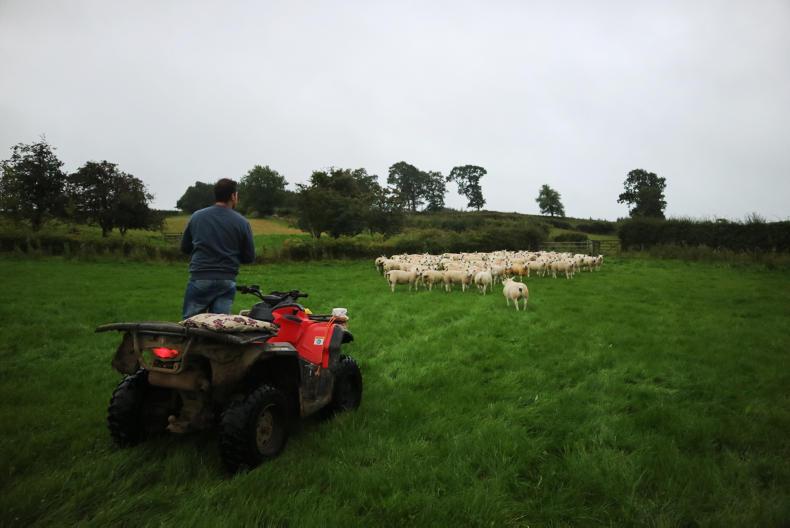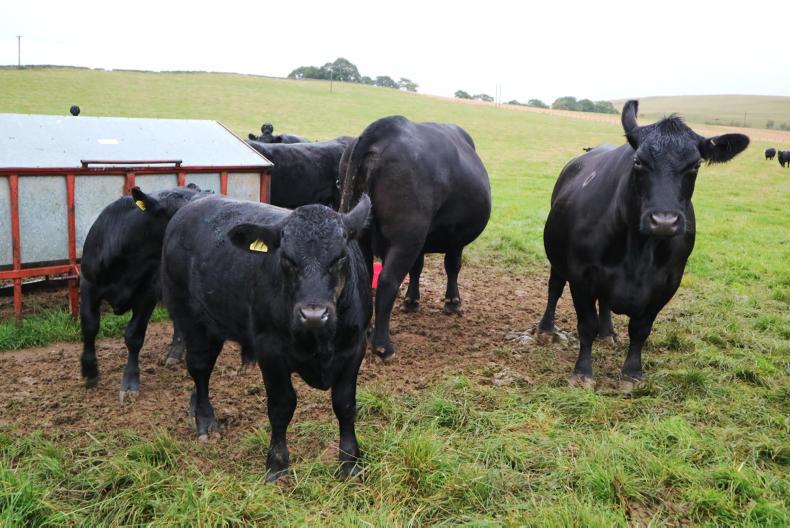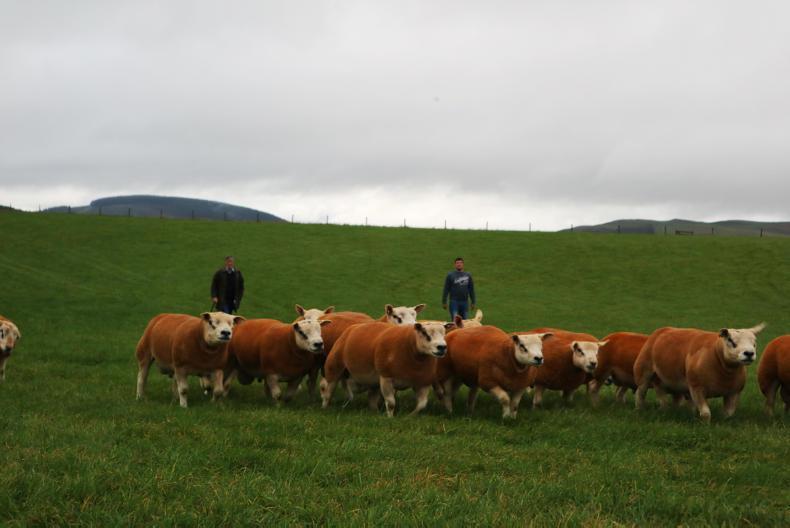Since its introduction to the UK in the 1970s, the Texel breed has grown exponentially to become the leading terminal sire breed. Gordon Gray has played an integral part in the breed’s history on UK shores and continues to breed 100 pedigree Texels at Sunnycroft Farm near Selkirk.
The Ettrick Texel flock started out in the Ettrick Valley nearly 30 years ago and while it has relocated to Sunnycroft in the intervening years, it still carries the name and reputation for breeding high quality Texels.
In addition to his pedigree sheep flock, Gordon also runs a 440-ewe commercial flock on a nearby block of rented land along with 20 pedigree Angus cows and 100 store cattle. With nearly 700 animals spread over 550 acres, Gordon, his wife Catherine and son David have their hands full.
Taking up Texels
Gordon’s involvement with Texels stretches back to 1980 when the family were one of the first importers of Texels from France. His father-in-law had been a founding member of the breed in the UK and Gordon steadily built up his herd from a small base.
“I suppose their ability as a terminal sire to produce a well-muscled lean animal is what really stands out about them,” Gordon muses.
“At the time, they met the challenge of taking on the number one breed at the time, Suffolk, head on.”
The Texel Sheep Society has now grown to more than 2000 breeders that notify some 55,000 lambs annually. Gordon himself has had the honour of holding the position of chairman within the organisation.
“For me it was a great privilege to serve as chairman of the society. Breeding isn’t only my business, it’s also my hobby and I love what I do. Being able to give something back and help the breed to develop further was something I really enjoyed.”
He has since stepped aside from his chairmanship to allow fresh blood and fresh ideas to make their mark on the breed and the industry. Young men and women like Gordon’s son David who, in addition to his duties on farm, is a contract shearer and pregnancy scanner with over 90,000 ewes passing over his probe every year.
Gordon is optimistic about the Texel’s future among prominent sheep breeds. “For starters, the breed has evolved tremendously over the last number of years. With the amount of recording and scanning techniques that are available that’s only going to improve. The challenge presented by other breeds being tried is good. Without challenge you might rest on your laurels and take things for granted. This way we’re always kept on our toes and are constantly improving.”
Going behind the sales ring
The work that goes into producing a pedigree animal is substantial, especially when aiming to breed female champions like Ettrick has done at the Great Yorkshire. As Gordon says himself: “Like anything, you get out what you put in. It’s the attention to detail that makes the difference.”
From the lambing season in February/March, the shearing of stock in preparation for showing and finally to the main sales period in early September there is always a lot to be done.
The Ettrick flock has committed to the highest standard levels when it comes to stock recording.
“All our stock is recorded and our EBVs (estimated breeding values) are among the top 10% of flocks. We are big believers in the importance of benchmarking and recording performance because the numbers don’t lie. I’d say it definitely helps when it comes to selling stock.”
Every year on the farm 50 ram lambs are scanned by Computed Tomography (CT). This involves whole body X-raying to access for total muscle, fat and bone yield in a live ram and can act as a near perfect predictor of carcase composition. Utilising CT scans significantly increases the accuracy of the EBVs which buyers are relying on with more confidence when selecting rams.
Attention to detail has seen the Ettrick flock record what was one of their best average years ever. At Kelso, 25 shearling rams averaged £1,630 while the farm also sold 40 ram lambs and 80 gimmers this year. They sold Texels at Lanark, in Wales, at Carlisle and Kelso and at the NSA sales. “We travel the country with them and it’s definitely the busiest time of the year after lambing,” Gordon explains.
The Ettrick flock, along with six other breeders, also run a private sale called the Select Seven Sale every year in December at Lanark where in-lamb gimmers are sold. Sheep have also been sold to the likes of France, Germany and the Netherlands which is testament to the farm as they are exporting to countries where stock would have been orginally imported from.
Testing the waters and technology
Interestingly, the farm uses artificial insemination on the pedigree herd which is perhaps a technique more common to dairy and beef farms than sheep enterprises. Gordon explains more about the decision. “For us it allows us to have far greater control about when the peak of our lambing occurs. This in turns means we have a tighter lambing period and therefore we can shear all our stock in a single day to prepare them for the sales as they’re all very similar ages.”
This year the farm also decided to stitch some chicory into an acre and a half of pasture that had been harvested for silage and was used to fatten rams before sale. “As we are a predominately sheep farm they struggle to graze out fields maybe as well as a farm that is following their flock with a herd of cattle. We don’t have the numbers to do that so this was a way to try and increase the utilisation of grass on the farm.”
Of course, the test of any pedigree animal sold to commercial farms is their performance on-farm and their ability to produce high value terminal stock in the case of Texels. With many repeat buyers of Gordon’s stock, the flock is doing quite well in that regard.
The Grays aren’t just happy to sell on their pedigree animals with some rams being retained to cross to their Suffolk-cross and Texel-cross mule ewes. The commercial operation has a prolificacy rate in excess of 200% every year and with their lambing commencing at the end of March there is never a dull moment in Sunnycroft.






 This is a subscriber-only article
This is a subscriber-only article
















SHARING OPTIONS: